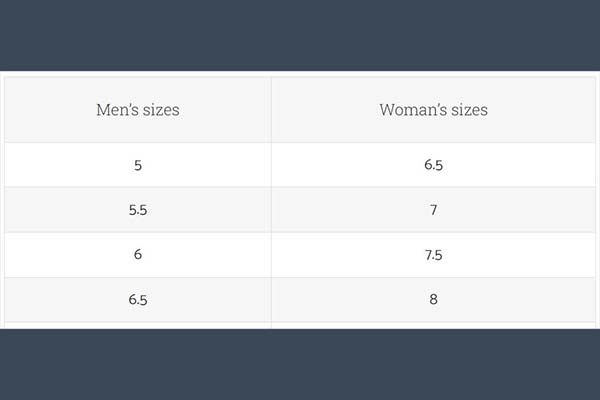The Sneakerhead Culture
The sneakerhead culture has grown significantly in recent years, with more and more people becoming passionate about collecting sneakers.
This article explores the origins of sneaker collecting, how technology and social media have influenced the culture, the business of sneakers, the future of the culture, and potential challenges it may face.
Definition of “Sneakerhead”
A sneakerhead is a term used to describe someone who is passionate about collecting, buying, and trading sneakers. Sneakerheads are known to have a deep knowledge and understanding of the sneaker industry and are often considered to be experts in the field.
Brief history of the term
The term “sneakerhead” originated in the 1980s and was used to describe enthusiasts who were passionate about collecting sneakers, particularly those made by brands such as Nike and Adidas.
The term became more widely used in the 1990s as the internet and social media made it easier for sneaker enthusiasts to connect and share information about their collections.
Overview of the current state of the sneakerhead culture
The sneakerhead culture has grown significantly in recent years, with more and more people becoming passionate about collecting sneakers. This has led to an increase in demand for limited edition and exclusive sneakers, resulting in the rise of a highly lucrative sneaker resale market.
Additionally, the culture has become more mainstream and accepted in the fashion industry, with many high-end fashion brands releasing their own sneaker collections. The culture continues to evolve and has become a multi-billion dollar industry with no signs of slowing down.
The Origins of Sneaker Collecting
The trend of sneaker collecting started in the 1980s, when sneakers began to be seen as more than just functional footwear. Sneakers became a status symbol and a way for people to express their individuality and personal style. As a result, people began to collect sneakers in order to show off their collections to others.
Additionally, as sneakers became more popular and limited edition releases became more frequent, collecting them became a way to secure a piece of sneaker history.
Key figures and events that helped shape the culture
- Michael Jordan, who had his own line of sneakers with Nike, is considered to be one of the key figures in popularizing sneakers as a status symbol and helping to establish the trend of sneaker collecting.
- The Air Jordan 1 release in 1985 was considered a defining moment in the sneaker culture, as it marked the beginning of the sneakerheads trend.
- In the late 90s and early 2000s, the internet and social media helped to connect sneaker enthusiasts from all over the world and allowed them to share information about their collections and upcoming releases. This led to the formation of online communities and forums dedicated to sneaker collecting.
The first sneakers that sparked the trend of collecting
The Air Jordan 1, which was released in 1985, is considered to be one of the first sneakers that sparked the trend of collecting. The sneaker was designed by Peter Moore and worn by Michael Jordan during his rookie season with the Chicago Bulls.
The popularity of the Air Jordan 1, along with the limited nature of its releases, made it a highly sought-after sneaker and helped to establish the trend of sneaker collecting.
The Impact of Technology and Social Media
The internet and social media have played a significant role in the growth and evolution of the sneakerhead culture. They have made it easier for sneaker enthusiasts to connect and share information about their collections and upcoming releases, as well as providing a platform for buying and selling sneakers.
The use of social media by sneaker companies and influencers has also helped to increase the visibility and popularity of the culture.
The role of online communities and forums in the sneaker collecting world
Online communities and forums dedicated to sneaker collecting have played a significant role in the growth of the sneakerhead culture. They provide a platform for sneaker enthusiasts to connect, share information and advice, and buy and sell sneakers. These communities have also helped to establish a sense of community and camaraderie among sneaker enthusiasts and have played a significant role in the growth and evolution of the culture.
The impact of e-commerce on the Sneakerhead culture
E-commerce has had a significant impact on the sneakerhead culture, making it easier for enthusiasts to buy and sell sneakers. Online retailers and marketplaces such as eBay, GOAT, StockX and others have made it possible for sneaker enthusiasts to purchase limited edition and exclusive sneakers from anywhere in the world.
This has led to an increase in demand for these types of sneakers, and as a result, the rise of a highly lucrative sneaker resale market. Additionally, the rise of e-commerce has also led to the emergence of new business models such as sneaker subscription services.
The Business of Sneakers
The sneaker market has grown significantly in recent years, with the global sneaker market size expected to reach $95.14 billion by 2025.
The market is driven by factors such as the increasing popularity of the sneakerhead culture and the rise in demand for limited edition and exclusive sneakers. The rise of e-commerce and the emergence of sneaker resellers have also contributed to the growth of the market.
How sneaker companies and resellers have adapted to the rise in demand
Sneaker companies have adapted to the rise in demand by releasing limited edition and exclusive sneakers, and by collaborating with other brands and designers to create unique and highly sought-after products. Sneaker resellers, on the other hand, have adapted by leveraging e-commerce and social media platforms to connect with customers and increase their reach.
They have also developed new business models such as sneaker subscription services, which allow customers to regularly receive exclusive and limited edition sneakers.
The rise of sneaker investment
Sneaker investment refers to the practice of buying and holding limited edition and exclusive sneakers with the expectation of selling them at a higher price in the future.
The rise of the sneakerhead culture has led to an increase in demand for limited edition and exclusive sneakers, which in turn has led to an increase in sneaker prices. This has led to the rise of sneaker investment as a way for sneaker enthusiasts to profit from the trend.
Impact of Sneakerhead culture on the fashion Industry
The sneakerhead culture has had a significant impact on the fashion industry. Sneakers have become an important part of fashion, with many high-end fashion brands releasing their own sneaker collections.
The trend of sneaker collecting has also led to the rise of a highly lucrative sneaker resale market and has influenced the fashion industry to pay more attention to the sneaker market.
Sneakers are now considered as a fashion statement and has become a must-have for any fashion-conscious individual.
The Future of the Sneakerhead Culture
The sneaker market is expected to continue growing in the future, driven by factors such as the increasing popularity of the sneakerhead culture and the rise in demand for limited edition and exclusive sneakers. The use of technology and social media is also expected to continue playing a major role in the market.
As for trends, it is expected that the demand for sustainable and eco-friendly sneakers will increase, as well as the use of virtual reality and augmented reality in the sneaker retail experience.
The potential for the culture to continue growing and evolving
The sneakerhead culture has already grown significantly in recent years and is expected to continue growing in the future. As the market continues to grow, the potential for the culture to continue evolving is high.
Sneaker companies and resellers will continue to adapt to the changing market and customers’ demands, and new technologies and business models are likely to emerge.
Challenges that the culture may face in the future
The sneakerhead culture may face several challenges in the future such as,
- The increasing competition in the market may lead to saturation and make it difficult for companies and resellers to stand out.
- The rise of sustainable and eco-friendly sneakers could lead to a decline in demand for traditional sneakers made with non-sustainable materials.
- The increase in counterfeit products in the market can hurt the authenticity of the culture and make it difficult for legitimate resellers to operate.
- The use of technology and social media in the market could lead to the spread of misinformation and make it difficult for customers to distinguish between legitimate and counterfeit products.
Final thoughts on the future of sneaker collecting and its impact on the fashion industry
Sneakers have become an important part of fashion, and the trend of sneaker collecting has led to the rise of a highly lucrative sneaker resale market.
The culture has also brought people together and created a sense of community and camaraderie among sneaker enthusiasts.
The sneaker market is expected to continue growing in the future, driven by factors such as the increasing popularity of the sneakerhead culture and the rise in demand for limited edition and exclusive sneakers.
The use of technology and social media is also expected to continue playing a major role in the market.
As for the fashion industry, it is expected that the demand for sustainable and eco-friendly sneakers will increase and sneakers will continue to be an important part of fashion, and the future looks bright for the sneakerhead culture as it continues to evolve and grow.
However, it is important for the culture to be aware of potential challenges and to continue to adapt and evolve to stay relevant in the market.






